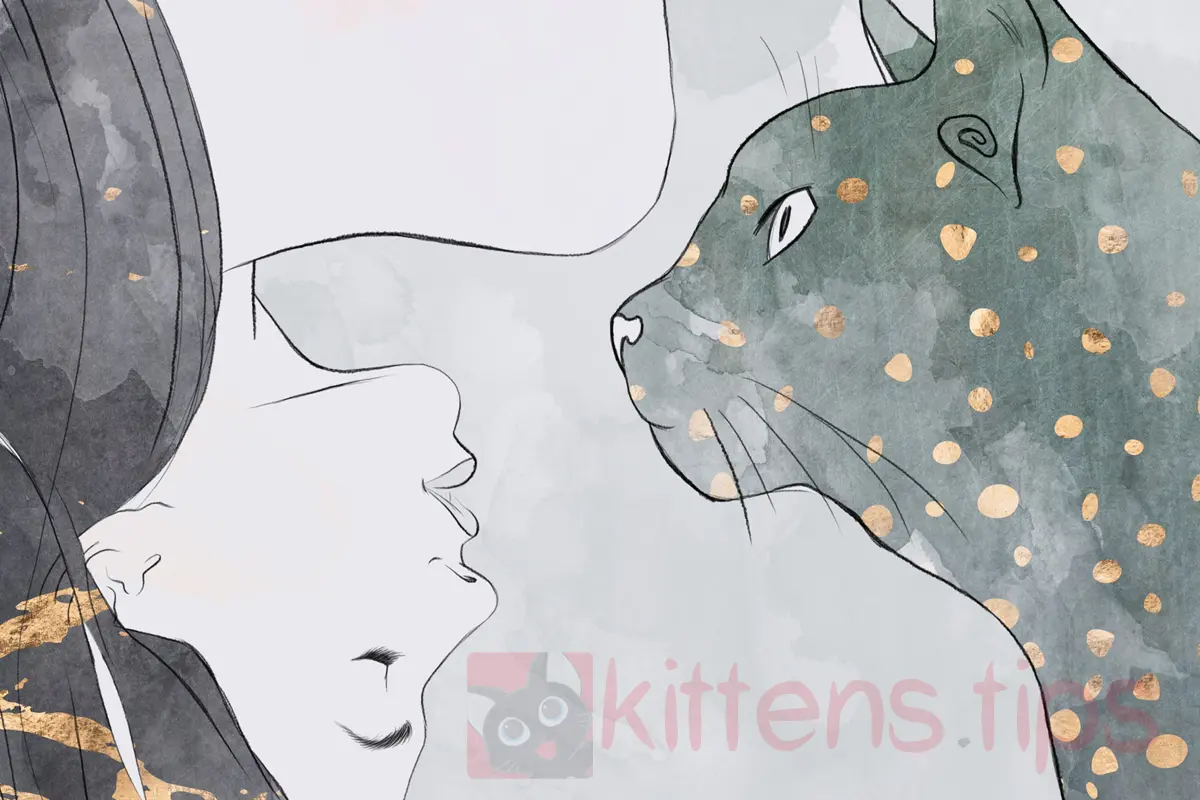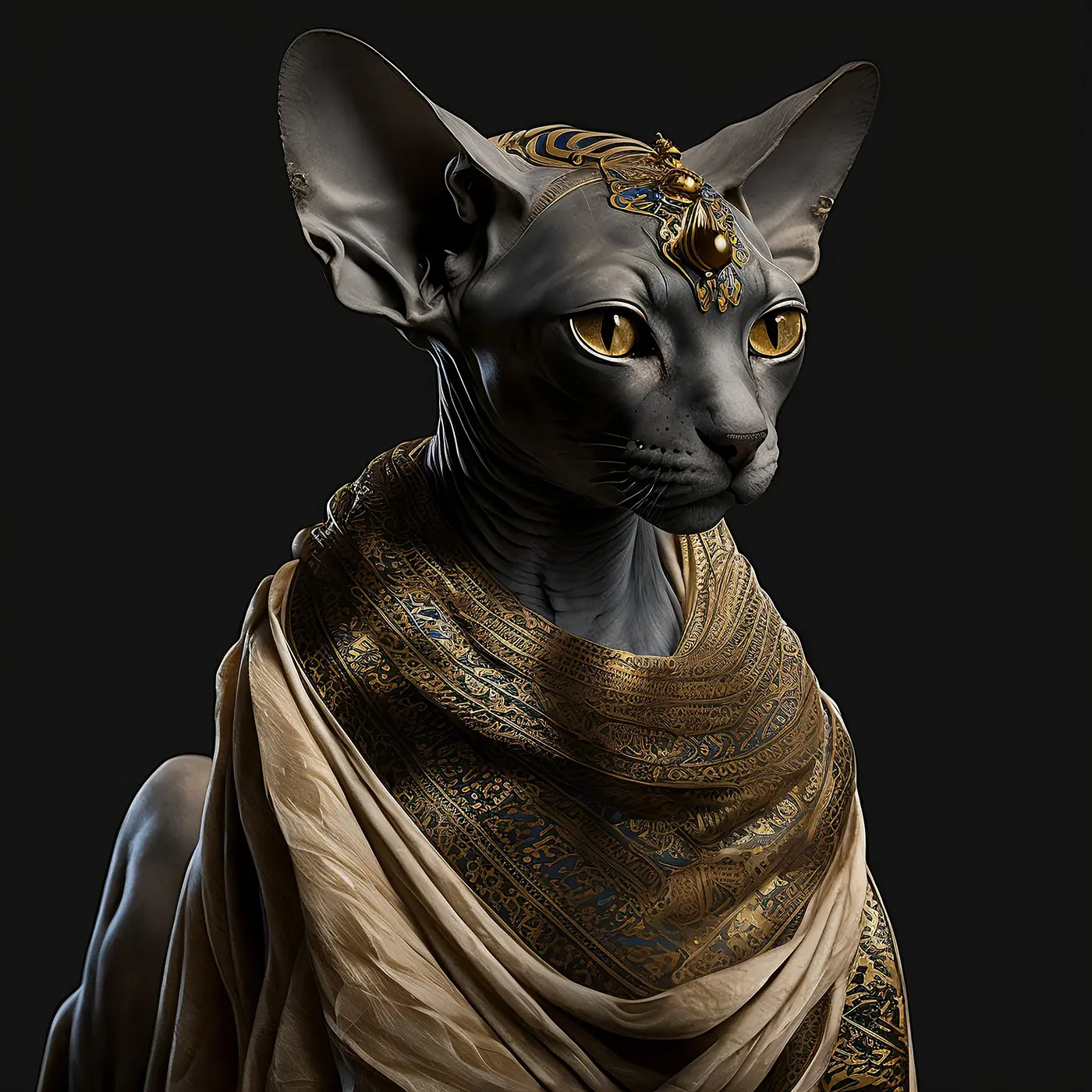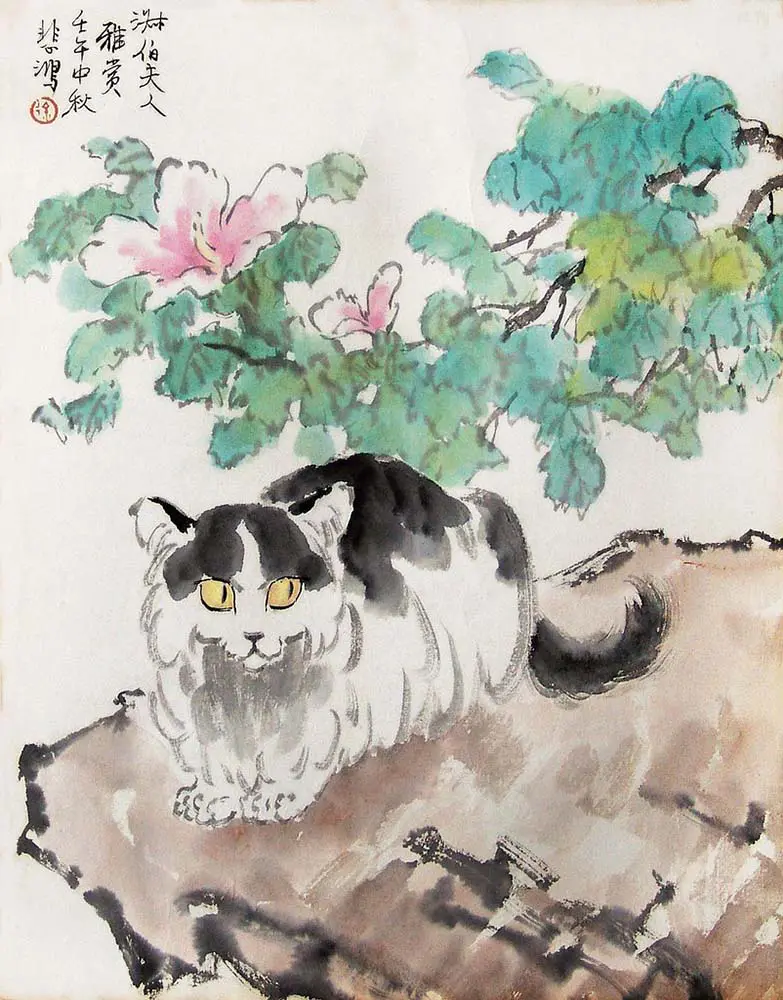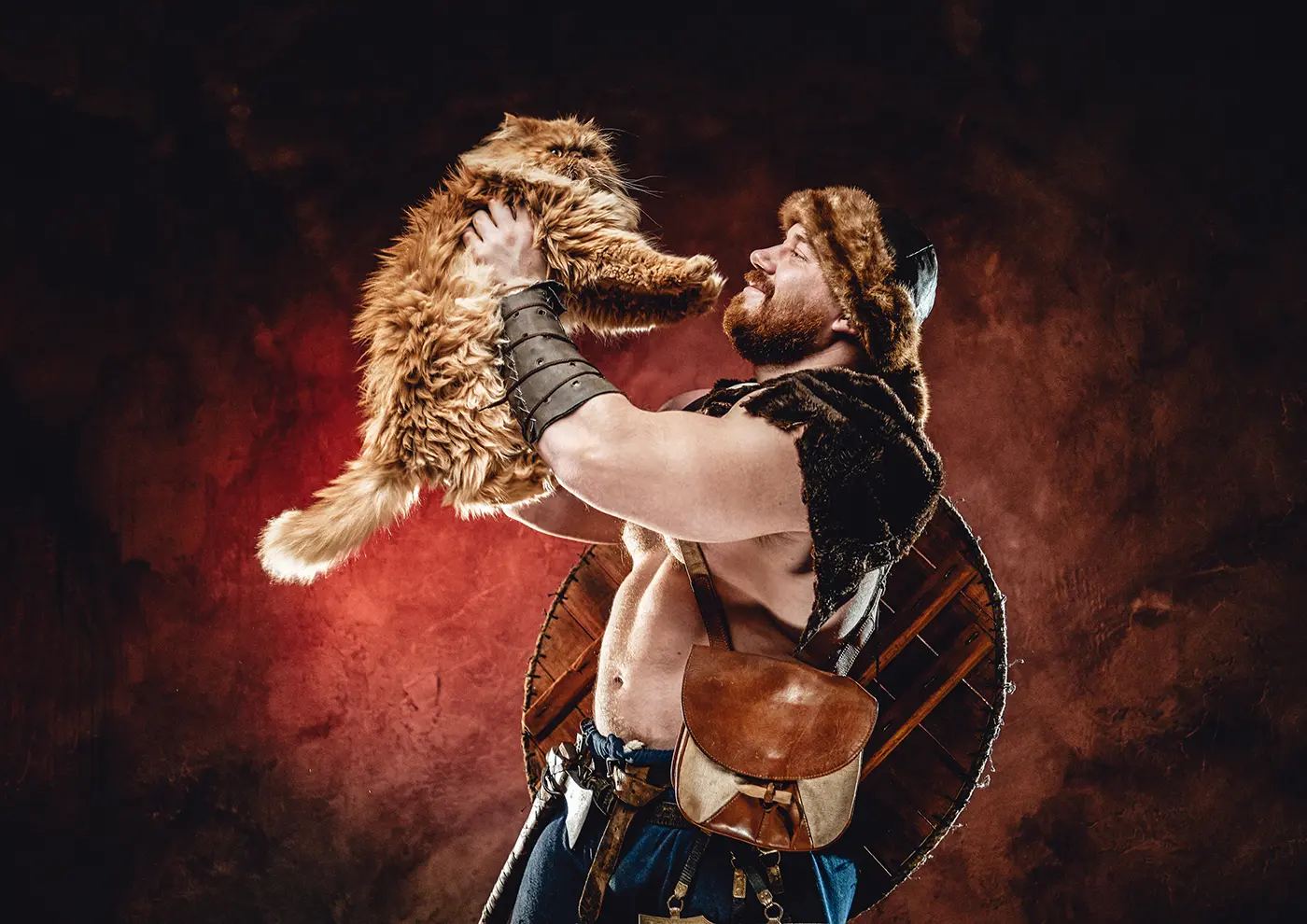
The mysteries of cats in religions and cultures around the world
The mysteries of cats in religions and cultures around the world are shrouded in a veil of fascination and curiosity. Since the dawn of human history, cats have played a significant role in people’s lives, and their connection to spirituality and human beliefs runs deep. From Ancient Egypt, where cats were revered and associated with the goddess Bastet, to Japan, where cats were considered divine messengers and symbols of luck.
Although the exact moment of cat domestication remains a debated topic among researchers, it is estimated that this special relationship took place approximately 9,000 years ago. The first domestic cat was believed to be a species of African wildcat called Felis lybica. Since those ancient times, cats have become part of everyday life, as well as objects of veneration and adoration in various cultures and religions around the world.
Table of Contents
The mysteries of cats in religions and cultures around the world
Cats have always held a special place in people’s hearts, and the mysteries of cats in religions and cultures have piqued human curiosity throughout the millennia. Fascinating and mysterious, they have become the subject of many legends, myths, and superstitions in religions and cultures worldwide. Throughout history, cats have been revered, adored, and even feared, being associated with supernatural powers and profound symbols. They have entered the mythology and rituals of different traditions, bringing with them an aura of mystery and charm.
Cats have been associated with some religions and have played a significant role in their beliefs and practices. Let’s explore what the cat has meant in various cultures and religions around the world.
The Cat in Ancient Egyptian Religion
Ancient Egypt arguably has the oldest and closest connection to cats. In Ancient Egypt, cats held a special place in religion and in the daily lives of people, being considered sacred animals and adored for their mysterious and protective qualities.
One of the most important deities associated with cats in Ancient Egypt was the goddess Bastet (or Bast). The goddess Bastet was often represented as a woman with the head of a domestic cat. She was the goddess of home, family, fertility, and pleasure. Bastet was considered a gentle and protective deity, and cats were believed to be manifestations of her energy and spirit.
Cats were revered and protected in the temples dedicated to the goddess Bastet. It was believed that the presence of a cat in a house brought luck and protection against evil. In the event of a family cat’s death, members of that family would shave their eyebrows as a sign of mourning and would carry small cat statues to express their grief.

Cats were also considered efficient hunters and protectors against rodents and venomous snakes. They were often associated with the lioness goddess Sekhmet, who was the goddess of war and disease. They were considered avatars of this goddess, and it was believed that cats possessed healing and protective powers.
Due to their importance in the cult of the goddess Bastet, cats were treated with great respect and considered sacred animals. Harming or killing a cat was considered a serious sacrilege and could be punishable by death.
Today, influences of ancient Egyptian culture and the worship of cats continue to be found in some practices and customs. Domestic cats are still revered and appreciated for their grace and mystery, and the image of the cat is often used in souvenirs and artistic representations that evoke the ancient Egyptian heritage.
The Cat in Chinese Culture
The cat holds special significance in Chinese culture, being associated with various symbols and superstitions. In certain branches of Buddhism, cats are considered spiritual animals and bringers of luck. They are often associated with the popular figure of Maneki-neko from Japanese culture, representing a cat that brings luck and prosperity. It is usually depicted as a cat with a raised paw in a gesture of greeting. It is believed to bring luck, prosperity, and well-being to homes or businesses.
The cat is often associated with the yin-yang symbol in Chinese culture. This duality symbolizes the balance and harmony in the universe and represents the complementary opposition of natural forces. The cat is considered to be connected to the yin energy, which is feminine, mysterious, and passive.

In Feng Shui practice, the cat is considered a symbol of protection and attraction of positive energies. The Lucky Cat is often placed in homes, offices, and shops to bring prosperity and harmony to the environment.
In certain regions of China, there are festivals dedicated to cats. These events bring cat lovers together and are an opportunity to celebrate the beauty and importance of these animals in Chinese culture.
Cats in Viking Culture – Mysteries of Cats in Religions and Cultures
In Viking culture, cats held a special significance and were considered sacred and mystical animals. They were often associated with the goddess Frigg or Freyja, the goddess of love, fertility, and beauty. Freyja was accompanied by two giant cats named Bygul and Trjegul, who pulled her chariot.
Cats were seen as spiritual guides and bringers of luck. They were seen as the link between the human world and the spiritual world, having the ability to navigate through invisible regions and communicate with spirits and gods.
Cats in Viking culture were often associated with feminine power and were considered companions and protectors of women and children. They were considered guardians of homes and families, protecting households from evil spirits and bringing prosperity to households.

They were also understood to be creatures of freedom and independence. They were appreciated for their hunting skills and agility, considered symbols of courage and adaptability.
They were seen as mysterious and sacred beings, holding an important place in Norse mythology and traditions. They were appreciated and respected for their special qualities and for their role in the daily and spiritual life of the Vikings.
Thus, these wonderful felines have captivated humanity across the globe, from the distant north of the Vikings to the hot sands of Ancient Egypt.
The Cat in Ancient Greece
If you’ve traveled to Greece, it’s nearly impossible not to have noticed the significant number of cats in this wonderful country. Present both in mainland Greece and on the hundreds of islands of Greece, they are most likely the descendants of cats created by the goddess Artemis, the sister of Apollo. According to legend, Artemis created the cat to make fun of the lion, an imposing animal created by her brother Apollo. The cat was created with grace, agility, and hunting abilities, and Artemis appreciated these qualities.
Being associated with the goddess Artemis, cats were considered sacred animals. They were adored and protected, and sacrilege against them was considered a very serious deed and was punished. In the temples dedicated to the goddess Artemis, statues or representations of cats could be found, and these animals were considered divine presences or messengers of the goddess.

Moreover, cats were considered bringers of luck and protection in Ancient Greece. They were often present in homes and households, seen as capable of warding off evil spirits and bringing harmony to homes. Additionally, cats were appreciated for their hunting abilities and their ability to keep rodents at bay.
Cats were the subject of artistic representations in ancient Greek art. They were often depicted in pottery, frescoes, or sculptures, portraying elegance, agility, and independence. These representations show the cultural importance of cats in ancient Greek society.
The Cat in Japanese Culture – Mysteries of Cats in Religions and Cultures
In Japanese culture, the cat occupies a special place and is associated with various traditions and beliefs. One of the most well-known representations of the cat in Japanese culture is Maneki-neko, also known as the “beckoning cat.” This is a statue or figurine of a cat, often with a raised paw in a gesture of greeting. It is believed that Maneki-neko brings luck, prosperity, and well-being to its owner.
The Maneki-neko cat is considered a talisman or amulet and is often placed in shops, restaurants, or homes to bring prosperity and attract customers. There are different variations of Maneki-neko, each with specific meanings and symbols. For example, a raised right paw is said to bring luck in business, while a raised left paw is associated with attracting customers. Of course, these are marketing tools in modern times.
In addition to Maneki-neko, the cat has other representations in Japanese culture. For example, cats are often present in Japanese folklore and in popular stories. There are legends and myths about cats possessing magical or spiritual powers and being able to bring prosperity or protection. Some of these stories say that cats can see spirits or can ward off bad luck and evil spirits.
Moreover, cats have a special place in Japanese culture through art and literature. They can be found in works of art, in traditional paintings, or in illustrations from Japanese books and manga. Cats are often portrayed in a graceful and mysterious way, reflecting their aspects of elegance and independence.
In conclusion, the cat plays an important role in Japanese culture, being associated with luck, prosperity, and popular traditions. Through artistic representations, myths, and traditions, the cat continues to have a significant impact on everyday life and the imagination of the Japanese people.
The Cat in Ancient Rome
Cats did not have their own religious cult in Ancient Rome, as was the case in other cultures, such as in Ancient Egypt. However, they were respected and appreciated for their hunting abilities and for the companionship they provided to humans.
In Ancient Rome, the cat held a special place and was generally viewed with admiration and respect. Cats were considered valuable domestic animals for their ability to hunt rodents, such as mice and rats, which were considered pests in homes and warehouses.
Cats were present in Roman households and were considered valuable pets. They were cared for and fed, and sometimes even adored by their owners. It was believed that cats brought luck and protection to homes and their families.
Additionally, cats were associated with the Roman goddess of hunting and fertility, Diana. It was said that Diana had the power to transform into a cat and used this form to hunt and guard the natural world. Therefore, cats were considered sacred animals and were worshipped in temples dedicated to the goddess Diana.
I am convinced that the cat has been present in almost all cultures of the world, whether it was associated with a god or spirits or not. Just thinking about the fact that Ancient Egypt was the granary of Rome, we realize how much they needed cats in their fight against rodents. And that, in relatively recent history, about 2000 years ago.